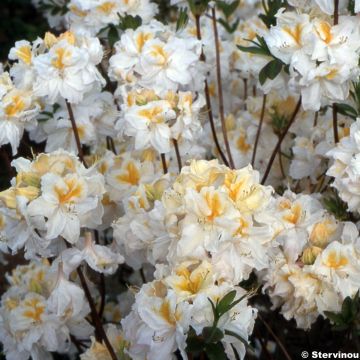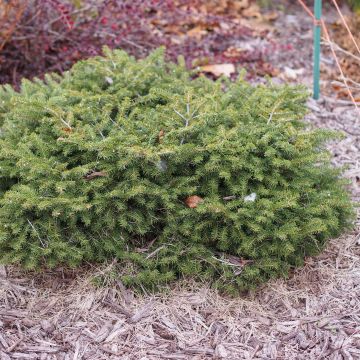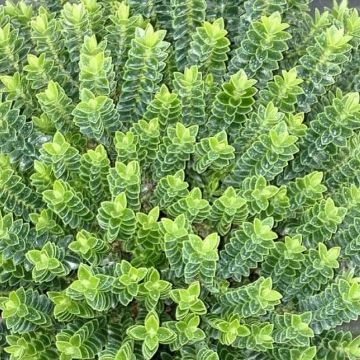

Rhododendron Halfdan Lem
Rhododendron Halfdan Lem
Rhododendron
This item cannot be shipped to the selected country
Delivery charge from €5.90
Delivery charge from €5.90
More information
Schedule delivery date,
and select date in basket
This plant carries a 24 months recovery warranty
More information
We guarantee the quality of our plants for a full growing cycle, and will replace at our expense any plant that fails to recover under normal climatic and planting conditions.
From €5.90 for pickup delivery and €6.90 for home delivery
Express home delivery from €8.90.
From €5.90 for pickup delivery and €6.90 for home delivery
Express home delivery from €8.90.
Does this plant fit my garden?
Set up your Plantfit profile →
Description
The Rhododendron 'Halfdan Lem' is an ancient variety, but still spectacular with its magnificent bright red flowering. Its large flowers grouped in terminal clusters illuminate spring with an explosion of colour. Well highlighted by the glossy dark green foliage, they are a real attraction in the garden. This medium-sized bush with slow growth will be at home in a semi-shaded area, at the edge of woods. It will thrive in acidic or neutral soil, provided there is moisture in summer.
The Rhododendrons are plants of the Ericaceae family, which includes about a hundred genera, such as popular heathers, blueberries, or strawberry trees. These plants mostly prefer lime-free soils, with an acidic tendency, as well as humid climates.
This hybrid 'Halfdan Lem' is an American variety from 1972 (Washington - USA), obtained by cross-breeding 'Jean-Marie de Montague' and 'Red Loderi'. After half a century, it remains perfectly relevant due to its dazzling flowering, which lasts for about 1 month, in April-May. The bright red flowers are very large, measuring 6cm (2.4in) each, grouped in clusters with a diameter of 20cm (7.9in), clearly visible from a great distance. The evergreen foliage in winter consists of large elongated leaves, of a glossy dark green colour, which makes it decorative all year round, even when not flowering. With a rather slow growth, this Rhododendron reaches a height of about 1.20m (3.3ft) in 10 years and a width of 1m (3.3ft). At maturity, it will form a bush of 2m (6.6ft) by 1.50m (3.3ft) in size. Like many of its counterparts, it prefers acidic, or even neutral soil (enrich it with ericaceous soil in this case), but definitely not chalk. A semi-shaded exposure will protect it from harsh sunlight and maintain the atmospheric humidity that it needs.
The Rhododendron 'Halfdan Lem' is a very floriferous plant, perfectly hardy, down to -20 °C/-25 °C (-4/-13F). Even though they prefer a semi-shaded exposure, hybrid Rhododendrons can withstand the morning sun as long as it is not scorching and their base remains cool. This bush can be planted in isolation, at the edge of large trees, or in a group. Its glossy foliage will blend perfectly with that of Camellias and by carefully choosing the varieties, you can enjoy superb flowering for a good part of the year. The C. sasanqua (Autumn Camellia) like the variety 'Versicolor' will animate the short days from October to December with their romantic flowering. The Camelia Fuji will then take over from January to March with its beautiful pure white flowers, enhanced by a yellow stamen centre with the most beautiful effect. In May-June, a Kalmia latifolia, or Mountain Laurel, will take over from this Rhododendron 'Halfdan Lem'.
Report an error about the product description
Rhododendron Halfdan Lem in pictures
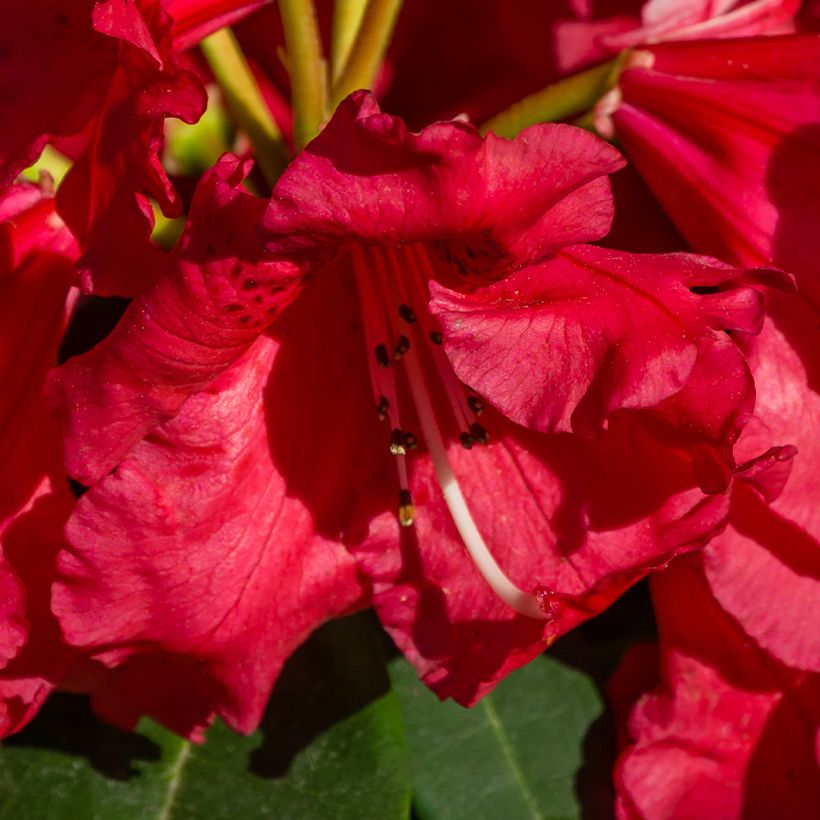



Plant habit
Flowering
Foliage
Botanical data
Rhododendron
Halfdan Lem
Ericaceae
Rhododendron
Cultivar or hybrid
Other Rhododendron and Azalea A to Z
Planting and care
Plant Rhododendron 'Halfdan Lem' in a semi-shaded location protected from cold and drying winds. It requires a fertile, humus-rich, and light soil, with a tendency towards acidity or neutrality. Like all heathland plants, it does not tolerate chalk soils or heavy soils saturated with water in winter. If the soil remains moist in summer, this rhododendron can also tolerate being exposed to morning sun. Avoid planting at its base, as its shallow roots do not tolerate competition from other plants, especially for water.
Dig a hole three times larger than the pot. Soak the root ball in non-chalky water and plant the bush at the level of the collar, in a mixture composed of 1/4 organic matter, leaf compost, gravel or pumice, and loam. Water generously and keep the soil moist in summer. Azaleas and Rhododendrons have a shallow root system, so they are sensitive to long periods of drought. Therefore, it is advisable to enrich the soil with humus and water abundantly during dry periods. Additionally, this root system is not very strong, which is why it is essential to lighten heavy soils with well-draining materials (gravel, pumice, clay pellets) when planting. Apply a mulch of shredded pine bark around the base of the bush every spring to maintain soil moisture and acidic pH.
Maintenance involves removing faded flowers and dead branches in summer. Azaleas and Rhododendrons can sometimes be attacked by weevils that eat the edges of leaves and rootlets, as well as the infamous "rhododendron beetle" which does not usually cause significant damage. Effective biological solutions now exist for controlling weevils. Yellowing of the leaves (chlorosis) in Rhododendrons indicates poor iron take-up from the soil and can lead to premature plant death. It is possible to address this by applying diluted iron chelate in the irrigation water. However, if this is not the cause, poorly drained soil or a planting depth that is too deep can also explain the phenomenon.
Rhododendrons thrive when planted in limestone-free soil and a humid environment. Their cultivation in hotter and drier climates is generally doomed to fail in the long run, despite all the efforts made to acclimatize them.
Planting period
Intended location
Care
-
, onOrder confirmed
Reply from on Promesse de fleurs
Evergreen shrubs
Haven't found what you were looking for?
Hardiness is the lowest winter temperature a plant can endure without suffering serious damage or even dying. However, hardiness is affected by location (a sheltered area, such as a patio), protection (winter cover) and soil type (hardiness is improved by well-drained soil).

Photo Sharing Terms & Conditions
In order to encourage gardeners to interact and share their experiences, Promesse de fleurs offers various media enabling content to be uploaded onto its Site - in particular via the ‘Photo sharing’ module.
The User agrees to refrain from:
- Posting any content that is illegal, prejudicial, insulting, racist, inciteful to hatred, revisionist, contrary to public decency, that infringes on privacy or on the privacy rights of third parties, in particular the publicity rights of persons and goods, intellectual property rights, or the right to privacy.
- Submitting content on behalf of a third party;
- Impersonate the identity of a third party and/or publish any personal information about a third party;
In general, the User undertakes to refrain from any unethical behaviour.
All Content (in particular text, comments, files, images, photos, videos, creative works, etc.), which may be subject to property or intellectual property rights, image or other private rights, shall remain the property of the User, subject to the limited rights granted by the terms of the licence granted by Promesse de fleurs as stated below. Users are at liberty to publish or not to publish such Content on the Site, notably via the ‘Photo Sharing’ facility, and accept that this Content shall be made public and freely accessible, notably on the Internet.
Users further acknowledge, undertake to have ,and guarantee that they hold all necessary rights and permissions to publish such material on the Site, in particular with regard to the legislation in force pertaining to any privacy, property, intellectual property, image, or contractual rights, or rights of any other nature. By publishing such Content on the Site, Users acknowledge accepting full liability as publishers of the Content within the meaning of the law, and grant Promesse de fleurs, free of charge, an inclusive, worldwide licence for the said Content for the entire duration of its publication, including all reproduction, representation, up/downloading, displaying, performing, transmission, and storage rights.
Users also grant permission for their name to be linked to the Content and accept that this link may not always be made available.
By engaging in posting material, Users consent to their Content becoming automatically accessible on the Internet, in particular on other sites and/or blogs and/or web pages of the Promesse de fleurs site, including in particular social pages and the Promesse de fleurs catalogue.
Users may secure the removal of entrusted content free of charge by issuing a simple request via our contact form.
The flowering period indicated on our website applies to countries and regions located in USDA zone 8 (France, the United Kingdom, Ireland, the Netherlands, etc.)
It will vary according to where you live:
- In zones 9 to 10 (Italy, Spain, Greece, etc.), flowering will occur about 2 to 4 weeks earlier.
- In zones 6 to 7 (Germany, Poland, Slovenia, and lower mountainous regions), flowering will be delayed by 2 to 3 weeks.
- In zone 5 (Central Europe, Scandinavia), blooming will be delayed by 3 to 5 weeks.
In temperate climates, pruning of spring-flowering shrubs (forsythia, spireas, etc.) should be done just after flowering.
Pruning of summer-flowering shrubs (Indian Lilac, Perovskia, etc.) can be done in winter or spring.
In cold regions as well as with frost-sensitive plants, avoid pruning too early when severe frosts may still occur.
The planting period indicated on our website applies to countries and regions located in USDA zone 8 (France, United Kingdom, Ireland, Netherlands).
It will vary according to where you live:
- In Mediterranean zones (Marseille, Madrid, Milan, etc.), autumn and winter are the best planting periods.
- In continental zones (Strasbourg, Munich, Vienna, etc.), delay planting by 2 to 3 weeks in spring and bring it forward by 2 to 4 weeks in autumn.
- In mountainous regions (the Alps, Pyrenees, Carpathians, etc.), it is best to plant in late spring (May-June) or late summer (August-September).
The harvesting period indicated on our website applies to countries and regions in USDA zone 8 (France, England, Ireland, the Netherlands).
In colder areas (Scandinavia, Poland, Austria...) fruit and vegetable harvests are likely to be delayed by 3-4 weeks.
In warmer areas (Italy, Spain, Greece, etc.), harvesting will probably take place earlier, depending on weather conditions.
The sowing periods indicated on our website apply to countries and regions within USDA Zone 8 (France, UK, Ireland, Netherlands).
In colder areas (Scandinavia, Poland, Austria...), delay any outdoor sowing by 3-4 weeks, or sow under glass.
In warmer climes (Italy, Spain, Greece, etc.), bring outdoor sowing forward by a few weeks.


































